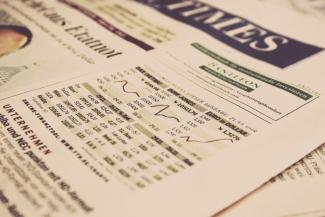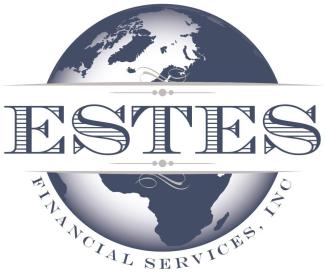
Sequence of Returns Risk is the Real Threat to Your Retirement Plan
Even as the stock market works its way to new highs, retirement savers, still shell-shocked from the extreme volatility of recent years, are slow to wade back into equities. Smaller investors tend to ignore the history that shows that the market eventually rewards those who can withstand the fluctuations and stay the course through the various market cycles. In fact, for accumulators, their biggest risk is not the potential 25 percent decline in the market; rather it’s missing the next 100 percent increase. But, for “decumulators,” retirees who need to spend down their assets to provide a lifetime of income, the risk is not “if” there is a 20 percent market decline, it is when it occurs. A steep market decline at the wrong time, even if it is followed by a sustained market increase, can have an adverse impact on their future income. For retirees, “Sequence of Returns” risk is potentially much more dangerous than market risk.
What exactly is Sequence of Returns Risk?
Sequence of returns risk, also known as sequence risk, involves the timing of market returns and their impact on your portfolio. Investors who are still accumulating assets are not really affecting by sequence of return risk because, regardless of when market goes up or down, at the end of period of time, the outcome will be the same. Sequence risk is more pronounced when you begin to systematically convert your assets into income. So, for retirees, the timing of market returns can have a significant impact on income distribution over the long term. A steep or sustained market decline in the early years of distribution can have a lasting negative impact. Conversely, a sustained market increase early on can provide a boost that can carry you through future market declines.
Understanding sequence risk is critical to retirement planning which has traditionally relied on projecting portfolio values and income distribution using a static, average rate of return. Not only has this provided unrealistic income distribution projections, for the unprepared it can produce disastrous results. While it may be reasonable to assume that, over a certain period of time, the market will generate an average rate of return, it doesn’t take into account the timing of actual returns which is a more critical factor. A portfolio can average 8 percent a year over twenty years, however, if the first five years consists of negative returns and the next fifteen years produce positive returns, the combination of the decline in portfolio values and income distributions in the early years could be too much to overcome.
It could be of as dollar-cost averaging (DCA) but in the reverse. With DCA you might invest $500 monthly for 20 years, and, when the share prices decline, your $500 will buy more shares. But, when share prices increase, your $500 buys fewer shares. The idea is that, over time, your average cost per share will be lower than the current market value. Now reverse that and take $500 a month out of your portfolio. If prices decline you will need to sell more shares in order to receive the $500, which leaves fewer shares to grow inside your portfolio. During a period of sustained market decline in the early years, the rate of share depletion could make it very difficult for your portfolio to recover its value even as the market rises.
If, on the other hand, your portfolio experienced negative returns only in the later years of distribution, there would be minimal negative impact. That’s because your portfolio benefited in the beginning years by the compounding of growth with an assist from the time value of money. The following chart compares the stark difference between two portfolios – Portfolio 1 experiences negative returns in the early years followed by even cycles of positive and negative years. Portfolio 2 has a four years of solid returns followed by intermittent cycles of negative and positive markets. Both portfolios are invested in the S&P 500, and both are distributing income at a rate of $25,000 per year adjusted for a 3% COLA.
|
|
Portfolio 1 |
|
|
Portfolio 2 |
|
|
|---|---|---|---|---|---|---|
|
Age |
Return |
Withdrawal |
Value |
Return |
Withdrawal |
Value |
|
65 |
|
|
$500,000 |
|
$500,000 |
|
|
66 |
(-23.1%) |
$25,000 |
$365,250 |
22.7% |
$25,000 |
$582,825 |
|
67 |
(-6.1%) |
$25,750 |
$318,704 |
19.6% |
$25,750 |
$666,456 |
|
68 |
(-0.3%) |
$26,523 |
$291,397 |
18.0% |
$26,523 |
$755,377 |
|
69 |
24.5% |
$27,318 |
$328,694 |
24.5% |
$27,318 |
$906,202 |
|
70 |
18.0% |
$28,138 |
$354,777 |
(-0.3%) |
$28,138 |
$875,706 |
|
71 |
19.6% |
$28,982 |
$389,764 |
(-6.1%) |
$28,982 |
$794,858 |
|
72 |
22.7% |
$29,851 |
$441,613 |
(-23.1%) |
$29,851 |
$588,250 |
|
80 |
(-23.1%) |
$37,815 |
$181,631 |
22.7% |
$37,815 |
$790,464 |
|
81 |
(-6.1%) |
$38,949 |
$133,941 |
19.6% |
$38,949 |
$899,073 |
|
82 |
(-0.3%) |
$40,118 |
$93,572 |
18.0% |
$40,118 |
$1,013,911 |
|
83 |
24.5% |
$41,321 |
$65,035 |
24.5% |
$41,321 |
$1,210,566 |
|
84 |
18.0% |
$42,561 |
$26,529 |
(-0.3%) |
$42,561 |
$1,164,868 |
|
85 |
19.6% |
$26,529 |
$0 |
(-6.1%) |
$43,838 |
$1,052,361 |
|
86 |
22.7% |
$0 |
$0 |
(-23.1%) |
$45,153 |
$774,491 |
|
94 |
(-23.1%) |
$0 |
$0 |
22.7% |
$57,198 |
$976,010 |
|
95 |
(-6.1%) |
$0 |
$0 |
19.6% |
$58,914 |
$1,097,167 |
|
96 |
(-0.3%) |
$0 |
$0 |
18.0% |
$60,682 |
$1,223,467 |
|
97 |
24.5% |
$0 |
$0 |
24.5% |
$62,502 |
$1,445,033 |
|
98 |
18.0% |
$0 |
$0 |
24.5% |
$64,377 |
$1,376,948 |
|
99 |
19.6% |
$0 |
$0 |
(-0.3%) |
$66,308 |
$1,230,356 |
|
100 |
22.7% |
$0 |
$0 |
(-6.1%) |
$68,298 |
$893,562 |
|
Avg |
6.5% |
$654,451 |
$0 |
(-23.1%) |
$1,511,552 |
$893,562 |
You may have noticed that the same sequence of actual S&P 500 returns was used in both portfolio illustrations, except they were reversed. That means both portfolios generated the same average rate of return of 6.5 percent; however, that average rate of return meant something completely different to each of these investors.
The key takeaway here is that, while it is impossible to project the sequence of returns as you enter the distribution phase, it would be important to not simply rely on traditional rules-of-thumb and assumptions as it can increase your long-term risks. Retirement planning must include strategies that can mitigate sequence of return risk to the greatest extent possible. Working with a financial advisor knowledgeable in income distribution and sequence risk can greatly reduce your exposure and protect your financial future.
*This content is developed from sources believed to be providing accurate information. The information in this material is not intended as tax or legal advice. It may not be used for the purpose of avoiding any federal tax penalties. Please consult legal or tax professionals for specific information regarding your individual situation. This material was developed and produced by Advisor Websites to provide information on a topic that may be of interest. The opinions expressed and material provided are for general information, and should not be considered a solicitation for the purchase or sale of any security. Copyright 2025 Advisor Websites.

